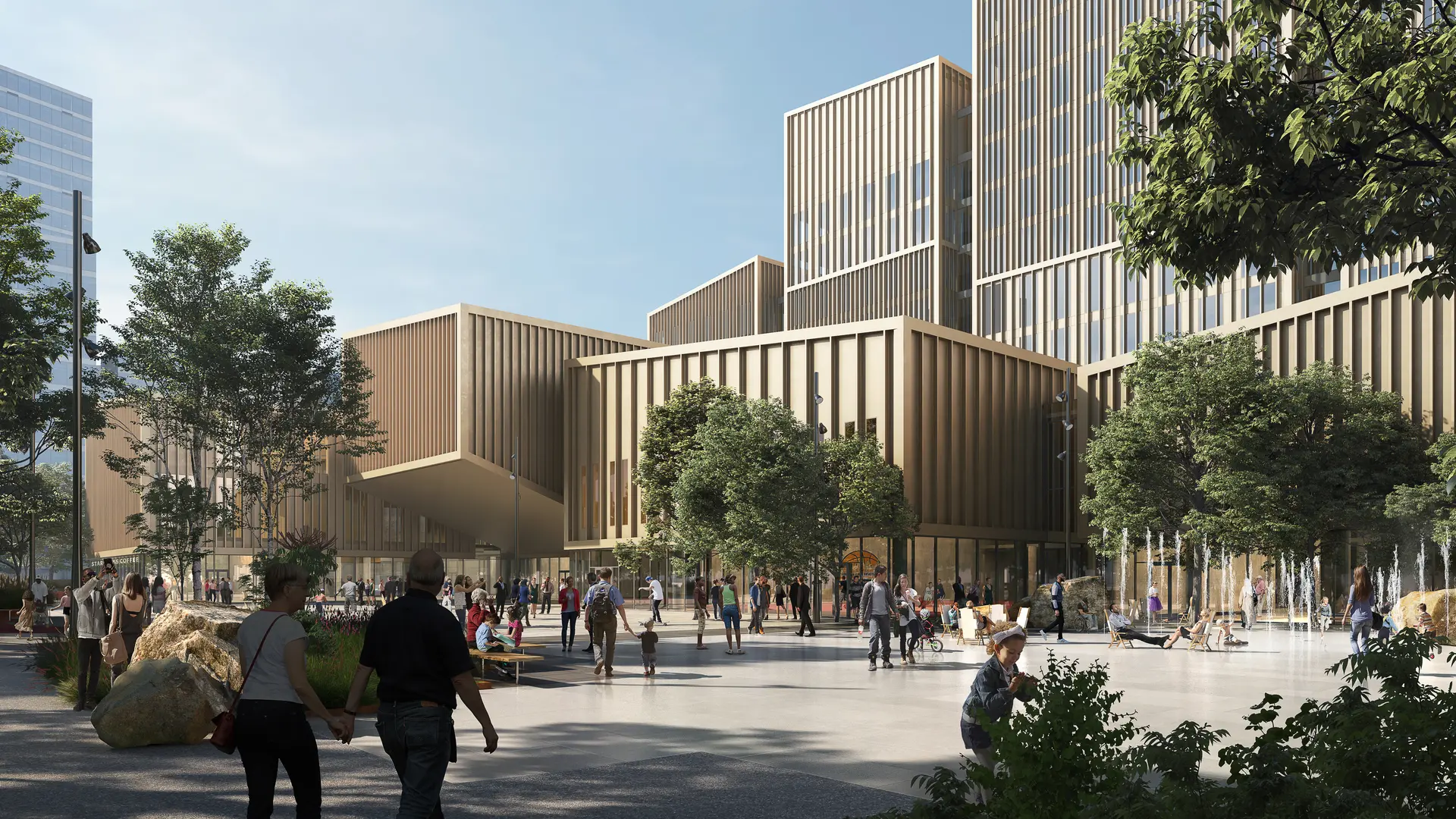How architects can give each year more shorts weather

Research, modeling software and careful design allow buildings to create comfortable outdoor microclimates, offering additional outdoor appeal in inclement climates.
Architects can’t control the weather – but we can work with it.
Building active, social urban communities means more than simply accommodating public space. These spaces need to be physically comfortable for users – And above all, this is a matter of creating the proper climate. Compare the life on any given street on a warm, sunny afternoon in June, and during a dreary, drizzling day in February. Few cities are fortunate enough to enjoy an outdoor climate that is comfortable all year round. But when we shape our designs from a researched understanding of the local climate, we can create spaces that take on unique climactic properties – microclimates – that artificially extend the annual range of perceived outdoor comfort, encouraging a more lively and active urban environment.
There are four key factors that determine outdoor comfort: Air temperature, solar radiation, relative humidity, and wind speed. These factors vary with the seasons, by the time of day, and by geographic location, down to individual city blocks. Climate-tailored designs must stem from thorough research on these local conditions: How the sun passes over a building site on any given day of the year, how neighboring buildings impact wind flow when the summer heat might become unbearably hot.
With this in mind, architecture becomes a tool to sculpt a more comfortable climate. Buildings can direct harsh prevailing winds away from public terraces, or provide vital shade under the high summer sun. Physical form must emerge in relation to its context and function – Not only reflecting considerations of how a building’s form interacts with climactic factors, but how the distribution of functions within can be optimized within the microclimate. A corner of the building site that receives a great deal of direct sunlight is optimal for a sidewalk café – Use the same sunny spot to store the café’s dumpsters, and the problem soon becomes obvious. In this way, microclimate design must always consider the interplay between local climate, building form and building function.
Our work on the Etobicoke Civic Center in Ontario, Canada serves as a case study of microclimate design in action. With winters averaging -5°C, summers pushing 25°C and strong winds coming in from Lake Ontario, the city presents a range of climactic factors to consider.
“In Etobicoke, just outside Toronto, winters are viciously cold and the summers very warm. Because we are designing a community-focused civic center, we want the building to help extend the comfortable outdoor season,” Says Jakob Stømann-Andersen, a partner at Henning Larsen. “By optimizing the microclimate conditions, we can ensure a public space that is livelier, more dynamic, and that invites more interaction between the people and their city.”
The towers of the Etobicoke Civic Center gradually rise upward in tiers, a design feature which guides the winds directly up and over the building site – Preventing harsh winds from affecting planted rooftop terraces or the interior public courtyard. With these building volumes serving as a windbreak, the central square and rooftop terraces receive direct sunlight all day, effectively mitigating the deterring chill factor that would otherwise creep in during the spring and fall. Compared to local surroundings, the Etobicoke Civic Center creates a microclimate which extends the comfortable outdoor season by a projected five additional weeks each year.
For local residents, this establishes the Etobicoke Civic Center as an appealing cultural hub, encouraging the community to claim outdoor spaces for a greater share of each year. Especially in the chilly days of spring and fall, Etobicoke offers a comfortable common forum, a basis for new urban life for greater Toronto.



